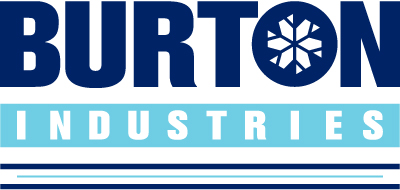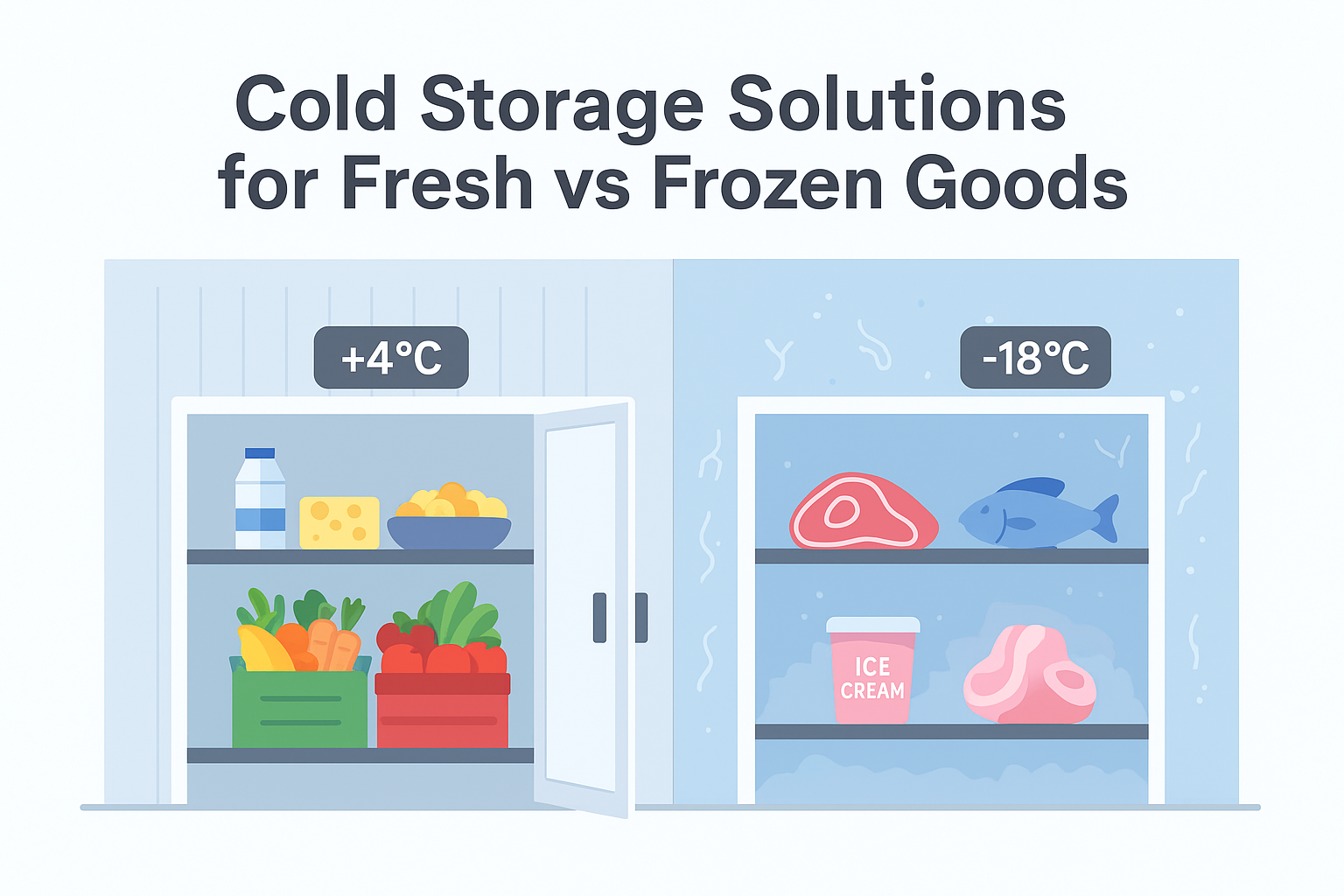If you’re a business that handles perishable goods, undoubtedly, you would know that cold storage solutions differ for fresh and frozen goods. To keep these foods at the correct temperature is crucial for both food safety and optimum storage times to avoid spoilage and waste. So, knowing the different needs of each category is important for the longevity of your business.
Understanding The Difference: Fresh vs Frozen Storage
Fresh food storage is commonly referred to as refrigerated storage. This involves using a temperature-controlled environment within a typical range of between 0 to 10 degrees Celsius. Essentially, food items that are commonly stored within this range are dairy products, fresh produce such as fruits and vegetables, ready-made meals and beverages.
On the other hand, frozen storage is normally used for highly perishable goods to extend their shelf life. This includes meats, poultry, fish, frozen vegetables and ice cream. For this type of storage, a freezer unit is needed that operates at below freezing point (0 degrees Celsius), with the normal temperature being around -18 degrees Celsius.
Because the thermal and operational demands differ so much, your cold storage solution should be matched accordingly. This means you need a cool room for fresh food storage and a freezer room for frozen storage.
Key Components & Design Considerations
Insulated Panels (Fridge & Freezer Panels)
Your cold storage unit needs to be manufactured using insulated panels, sometimes known as sandwich panels. The thickness of the panels required would depend on what type of storage you need.
Refrigeration Systems & Cooling Loads
Depending on your cold storage needs, you’ll require a refrigeration system that can easily handle the temperature range you need to use. You also want a system that can adapt to load changes within the cooling or freezing environment quickly.
Blast Freezer Integration
For frozen goods that have been transported, it’s common to put them into a blast freezer before storing them in your regular freezer room. A blast freezer can quickly bring down the temperature of frozen goods so that it’s within the optimum range.
Airflow & Layout
When designing your cold storage unit, it’s important to make allowances for good airflow around the products being stored. This usually involves shelving that’s situated a little distance from the walls, so that stock is not left sitting on the floor.
Door Design, Sealing & Access
The refrigerator or freezer door must also be made from insulated panels and have excellent seals to prevent cold air from escaping. Another consideration is to have sensors or alarms on the door to alert staff if it’s been left open for too long or hasn’t been closed properly.
Best Practice Tips
- Continuously monitor the temperature inside your cold storage unit to ensure it’s running efficiently.
- Perform regular maintenance on all electrical components to prevent failure and avoid costly repairs.
- Check the integrity of door seals and replace any that seem worn.
- Keep the cold storage unit clean at all times and make sure that stock is not sitting on the floor.
- Be purposeful when adding new food products to the storage unit to ensure that longer-stored products are moved to the front and used first.
Contact Burton Industries For All Your Cold Storage Solutions
As a Melbourne food business, you need to work out whether you need cold storage, a freezer room, a dedicated blast freezer, or all three. Getting the right cold storage solution means you can ensure food safety, reduce waste and optimise energy usage. If you’d like help with designing or upgrading your cold storage system, contact us today at Burton Industries for a consultation or quote.

